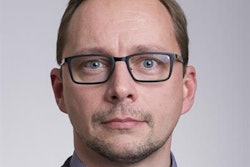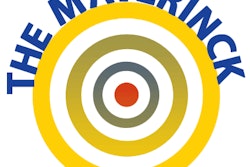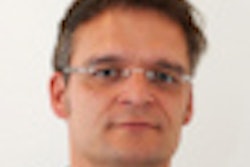
Sweden's world-famous Karolinska University Hospital (KUH) is preparing to test its new RIS/PACS this summer, ahead of rolling it out across the rebuilt institution in summer 2016. The powerful new RIS/PACS managed service is one of the main technological features of the project that is designed to radically improve workflow in radiology and other departments, in line with similar revamping taking place in hospitals across other regions.
The mammoth rebuilding of KUH will scythe imaging modalities at the Solna campus in the north of Stockholm. Despite the slash in equipment, a new strategy of greater specialization at the new Karolinska will lead to a dramatic increase in radiology patient throughput, according to head of diagnostic radiology and business solution owner Dr. Anders Wennerberg, PhD.
 The guiding principle at the new Karolinska is "the patient is always first." The Solna site is due to become fully operational by 2018, and patients will arrive at the accident and emergency department by helicopter, ambulance, or referral from another care provider.
The guiding principle at the new Karolinska is "the patient is always first." The Solna site is due to become fully operational by 2018, and patients will arrive at the accident and emergency department by helicopter, ambulance, or referral from another care provider.By summer 2018, the Karolinska's Solna campus will have fully transitioned to become a leading center for highly specialized healthcare in six main areas yet to be confirmed, but provisionally listed as cancer, cardiovascular, inflammation, neuro, pediatrics/reproduction, and trauma/reparative medicine. Patients with routine diseases such as pneumonia or appendicitis will be directed to other regional centers. While this will mean that overall patient numbers should decrease, particularly in the emergency room, the imaging services will undergo an increase in its workload as highly specialized medicine requires frequent use of highly specialized imaging.
"There will be fewer modalities, but they will be new and top of the range, and will be used all hours," he noted.
The 1,700-bed KUH last year had 1.5 million patient visits, admitted 108,000 patients for hospital stay, and its radiology staff across four radiology departments performed 360,000 exams. It is estimated that by 2018, imaging exams at KUH will have increased to a total of 500,000.
 Modalities at the new KUH will be top of the range and used around the clock, said Dr. Anders Wennerberg, PhD.
Modalities at the new KUH will be top of the range and used around the clock, said Dr. Anders Wennerberg, PhD.With such a spike in specialization and throughput, the need for a powerful RIS/PACS and other IT and telecommunications systems has become paramount to both successful implementation of the new radiology service and to the functioning of the entire rebuild.
PACS developer Sectra built the RIS/PACS, which has taken 2.5 years to procure owing to the complexity of the hospital's requirements, according to Wennerberg.
"The new RIS/PACS will be a tremendous improvement in terms of speed, availability, data security, mobility, and workflow efficiency," he said. "Two geographically separated but synchronized data centers will provide state-of-the-art performance. If necessary, the entire workload of Karolinska's imaging services can be supported by one of the data centers."
Vital to success was the region-wide decision to separately procure a vendor neutral archive (VNA) based on open standard Integrating the Healthcare Enterprise (IHE) Cross-Enterprise Document Sharing (XDS) architecture, which will serve to house all radiological data in Stockholm -- not just images, but also reports. The VNA will serve a population of 2 million, around one-fifth of the Swedish population.
"The decision to go for a centralized vendor neutral archive solution was taken by the diagnostic imaging and IT departments and the Stockholm county council. KUH will be the first major hospital to fully use the VNA next year. However, the first implementation will be in mammography in Stockholm," Wennerberg told AuntMinnieEurope.com.
He is confident that the imaging service will be unbroken between now and implementation of the new RIS and the new PACS in summer 2016. Once implemented, the changes will be immediately noticeable, including speed, user-friendliness, and built-in advanced visualization features, he noted.
.png?auto=format%2Ccompress&fit=max&q=70&w=400) By 2018, exams across the new KUH imaging departments are projected to rise from 360,000 to 500,000.
By 2018, exams across the new KUH imaging departments are projected to rise from 360,000 to 500,000.A major challenge to establishing the new RIS/PACS-service concerns integration, because a large number of dependent systems including the electronic health record (EHR), national information services, and third party advanced visualization software need to be integrated into the RIS and/or PACS in various ways.
Facts about the NKS project
- The number of patient rooms will be about 630.
- The duration of construction is from 2010 to 2018.
- The first patient will be received in 2016.
- Karolinska University Hospital is what the new hospital will be called.
- Stockholm County Council is both the client and owner; Skanska is the general contractor responsible for construction.
- The White Tengbom Team is responsible for the architectural design; Coor Service Management is the hospital's service partner.
- Design, construction, financing, and operations have been procured in accordance with public-private partnership.
Source: Annual Brochure 2014, nyakarolinskasolna.se.
"In terms of workflow efficiency, there is much to gain by smart integration," Wennerberg said, adding that an integration project was already underway. "The most essential systems will be integrated at go-live in the summer of 2016, with the more complex, but less critical ones to be added later."
At Solna, the new KUH structure comprises a new building on the existing site, with some of the old buildings kept for research. South of Stockholm, the Huddinge campus will also be extended in a couple of years' time with a new building. The old hospital will be kept, but the radiology department at Huddinge will probably be entirely moved into the new block.
Since January 2012, responsibility for the New Karolinska Solna (NKS) project has been shared by the County Council Executive Board (LSF) and Karolinska University Hospital. The project represents a Public Private Partnership agreement between Stockholm County Council and the project company Swedish Hospital Partners.



















